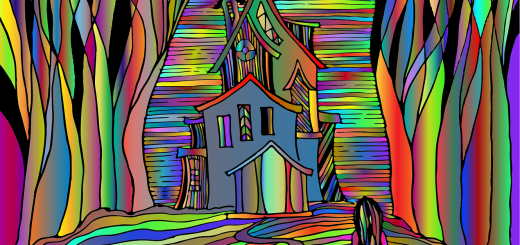How Animals Grieve: Mourning in Pets and Wildlife

Before diving in, please note: This post is for informational purposes only. If you’d like to know more about how we approach topics, feel free to check out our friendly Disclaimer Page.
Hey there, amazing readers! 🖐️ Just a quick note: yes, we know there are a lot of ads here. Trust us, we get it—it’s not the prettiest look, but they help us keep this blog alive and kicking. Those pesky little ads cover the costs of all the behind-the-scenes magic, from hosting and tech stuff to creating content we hope you’ll love.
We’re committed to delivering quality posts, and your support (even just sticking around despite the ads) means everything to us. So, bear with us, and thanks for helping us keep the good vibes rolling. Now, on to the fun stuff! 😉
TRANSLATE BUTTON AT THE END OF THE ARTICLE
A Quick Overview
Grief is an emotion we’re all too familiar with.
It can strike us in moments of loss, whether that be a beloved family member or a cherished pet.
But have you ever wondered how animals experience grief?
The truth is, they feel it too.
From pets to wild creatures, animals show signs of mourning that can be surprisingly profound.
In this article, we will dive into the ways animals grieve, explore the science behind these emotions, and discuss how we can support our furry friends through their tough times.
Grab a cozy blanket and let’s embark on this emotional journey together!
Understanding Grief: A Look at Animals’ Emotions
Animals have emotions just like we do.
They may not express them in the same way, but their feelings run deep.
For many pets, their humans are family.
When a pet loses a companion—human or animal—they can display signs of mourning that are strikingly similar to ours.
Take dogs, for instance; they can experience sadness, confusion, and even depression after the death of another pet or their owner.
I’ve seen my dog, Max, sulk after his buddy, Bella, passed on.
He’d wander around the house, looking for her in all the usual places.
It was heartbreaking.
Similarly, cats may hide away or become withdrawn after experiencing a loss.
They are known for their independence, but they also form strong bonds.
If they lose a companion, their behaviors can shift dramatically.
In the wild, animals also feel loss.
Social creatures like elephants and dolphins exhibit profound grief when a member of their group dies.
Their emotional responses indicate a level of understanding and attachment that many people underestimate.
Understanding that animals possess complex emotional lives helps us empathize with their experiences.
It reminds us we are not alone in our feelings of loss.
The Science Behind Grieving: What Research Tells Us
Research into animal emotions has grown in recent decades, revealing fascinating insights.
Studies show that many animals have sophisticated emotional capacities, including the ability to grieve.
For instance, a study on elephants found that they exhibit behaviors like touching and caressing the bones of deceased companions.
They even return to the site of death, which suggests they’re mourning.
That’s some heavy stuff!
In another study involving dogs, scientists observed behavioral changes after the loss of a companion.
Dogs displayed signs of depression, such as decreased activity and loss of appetite.
This was particularly evident in animals that had a strong bond with the deceased.
Discover "Dog Care: Learning How to Care for Your Furry Friend 🐾"
Moreover, studies suggest that animals have a form of empathy.
They can sense when another animal is experiencing distress.
This capacity for empathy might explain why some animals grieve so deeply.
Neuroscientific research indicates that the same areas of the brain activated in humans during grief are also activated in other species.
It’s a poignant reminder that emotional experiences are shared across species.
So, when we see our pets exhibit signs of grief, it’s important to recognize that they’re navigating profound feelings.
They’re not just “acting up” or being “needy”; they’re processing loss in their own way.
Pets and Grief: Signs Your Pet is Mourning
Recognizing the signs of grief in pets can help us support them better.
Here are some common indicators:
Changes in Appetite: If your pet suddenly loses interest in food, it might be a sign of mourning.
Lethargy: A once energetic pet may become lethargic or inactive.
Vocalization: Dogs and cats might vocalize more, perhaps howling or meowing in a way that seems unusual.
Withdrawal: Pets may isolate themselves, preferring to stay alone rather than engaging in normal activities.
Searching: Some pets may actively search for the deceased companion, which can be heart-wrenching to witness.
Pacing: Restless behavior, like pacing or excessive grooming, can also indicate distress.
Changes in Sleep Patterns: A grieving pet may sleep more or less than usual.
Emotional Dependence: Pets may cling to their humans more than usual, seeking comfort in their presence.
Play Behavior: Loss of interest in play can signal grief.
Physical Symptoms: Stress can manifest physically, so watch for symptoms like vomiting or diarrhea.
If you notice these signs, be gentle with your pet.
They are trying to cope with loss, much like we do.
Wildlife Mourning: Nature’s Response to Loss
In the wild, mourning behaviors can be just as poignant as those seen in our pets.
Take chimps, for example.
They’ve been observed carrying their deceased infants, often staying close to the body for extended periods.
This behavior shows their deep emotional bonds.
Similarly, in wolf packs, the loss of a member can lead to changes in pack dynamics.
They may vocalize in mourning, howling together as a tribute to their fallen comrade.
It’s a beautiful yet somber sight.
Birds, especially crows and magpies, have fascinating mourning rituals.
They will gather in groups around a deceased member, calling out loudly.
This communal mourning serves as a way for the group to process loss together.
One particularly touching example involves elephants at a watering hole.
When a herd encounters the bones of a deceased elephant, they often touch and caress the bones with their trunks, demonstrating their grief and respect.
In the animal kingdom, mourning can take on various forms.
Each species has its way of expressing loss, reminding us that grief is a universal emotion, transcending species boundaries.
Bonding Through Grief: Pets and Their Human Friends
As humans, we often feel helpless when our pets are grieving.
But our connection can actually help them heal.
Pets look to us for comfort, and sharing our own feelings of loss can be therapeutic for both parties.
When my dog Max mourned Bella, I found solace in spending extra time with him.
We cuddled, took long walks, and even played games that Bella used to enjoy.
This shared experience made our bond stronger.
Just like humans, pets benefit from routine during tough times.
Keeping their daily schedule—feeding, walks, and playtime—can provide a sense of stability.
Moreover, don’t underestimate the power of talking to your pet.
They may not understand the words, but they can sense your emotions.
I often found myself talking to Max about Bella, reminiscing about the fun times we shared.
It seemed to bring him some comfort.
Consider involving them in your grieving process.
Some people create memory boxes or scrapbooks of their pets.
Sharing those memories can help both you and your pet heal together.
Lastly, if your pet struggles significantly with grief, seeking the help of a veterinarian or animal behaviorist can provide additional support.
They can offer strategies tailored to your pet’s needs.
Unique Mourning Rituals in Different Animal Species
Every species has its unique way of mourning, which is both fascinating and heart-wrenching.
For instance, orcas have been known to carry their deceased young on their backs for days, sometimes even weeks.
This shows the deep attachment they have to their family units.
In contrast, some species of birds engage in what’s called "funerary behavior." They might cover a deceased member with leaves or other materials, almost as if they are laying them to rest.
Horses also exhibit unique behaviors.
They form strong bonds, and when one passes away, the remaining horses may stand vigil at the site for hours.
They communicate their loss through body language, often appearing more subdued.
Some monkeys have been observed performing what looks like a ritualistic grief display, where they vocalize and move slowly around the deceased.
This can last for several days, showing just how deeply they grieve.
These behaviors are more than instinct; they speak to the emotional depth found in the animal kingdom.
Every creature processes loss in ways that reflect their social structures and relationships, making mourning a shared experience across species.
How Dogs and Cats Process Loss Differently
Dogs and cats process grief quite differently, shaped by their unique social structures.
Dogs, being pack animals, often take the loss of a companion hard.
Their social nature means they’re attuned to the dynamics within their environment.
When a fellow pack member, whether human or animal, dies, they may exhibit separation anxiety or cling more to their humans.
Cats, while social, are generally more independent.
When they experience loss, they might retreat into themselves.
My cat, Whiskers, became unusually quiet after losing his buddy.
He didn’t seek comfort in me as much as I’d hoped; instead, he preferred to sulk in his favorite sunny spot.
The grieving process in dogs often involves seeking reassurance and comfort from their humans.
For instance, they may follow you around the house or engage in more cuddling than usual.
In contrast, grieving cats may become less affectionate, spending time alone, which can make it harder for us to recognize their grief.
Understanding these differences can help us provide better support.
Spend time with your dog, engage in their favorite activities, or simply be present.
With cats, patience is key; let them come to you when they’re ready.
In both cases, maintaining a routine can be beneficial.
Dogs thrive on structure, while cats appreciate familiar environments.
Elephants and Their Heartfelt Farewells to Loved Ones
Elephants are often hailed as one of the most emotionally intelligent species on the planet.
Their mourning rituals are deeply moving and showcase the profound bonds they share.
When an elephant dies, the herd demonstrates grief in several ways.
First, they may visit the site of the death repeatedly, touching the bones with their trunks.
This action reflects a profound sense of loss and respect.
It’s not just a fleeting reaction; they return time and again.
Additionally, elephants have been observed engaging in vocalizations that sound like mourning.
These low-frequency rumbles can be heard from great distances and serve to communicate their loss to other herd members.
Interestingly, elephants also display changes in behavior after a loss.
They may become more protective of their young or exhibit signs of depression, such as decreased social interaction.
Another fascinating aspect is their ability to bond with each other during periods of grief.
When older elephants in the herd show signs of mourning, younger ones often mirror those behaviors, reinforcing their social connections.
These observations illustrate just how deeply animals can feel loss, showing us that grief is a universal experience that transcends species.
And honestly, it’s hard not to get teary-eyed thinking about their heartfelt farewells.
Birds and Their Songs: A Tribute to Departed Companions
Birds, often seen flitting about cheerfully, can also express grief in poignant ways.
Many species use their songs as a means of communicating their emotions, including mourning.
When a bird loses a mate, it may increase its vocalizations, often in a mournful tone.
These songs can serve multiple purposes: expressing sorrow, attracting a new mate, or even warding off potential threats.
For instance, research shows that some species of crows engage in communal mourning.
When one of their own dies, crows will gather, cawing loudly.
This behavior not only acknowledges the loss but also reinforces social bonds within the group.
Similarly, songbirds may change their melodies after losing a companion, as if to reflect their emotional state.
It’s as if their songs become a tribute to the departed, serving as an emotional outlet.
Such behaviors highlight the complexity of avian emotions and demonstrate that even the smallest creatures can experience profound grief.
When I hear bird songs in the morning, I often think about the stories they could tell.
Each chirp and tweet might carry a memory, a tribute to love and loss—how beautiful is that?
The Role of Social Structures in Animal Grieving
Social structures play a significant role in how animals experience grief.
In species that live in tight-knit groups, like primates and elephants, the loss of a member can lead to a collective mourning process.
This solidarity can help all members cope with their grief together.
In contrast, solitary animals may not exhibit visible signs of mourning.
They may grieve quietly, more inwardly, without the social support that group-living animals have.
Take wolves, for instance.
Their pack structure means that the loss of a member can lead to changes in hierarchy and dynamics.
Thus, the entire pack may display signs of distress, reinforcing their social bonds in the face of loss.
On the flip side, some animals, like cats, don’t rely on social structures as heavily.
Their grieving process might be more solitary, focusing on their inner feelings rather than communal support.
Understanding these dynamics can help us appreciate the diversity of animal grieving.
It reminds us that, just like humans, every species has its own way of processing loss, shaped by its social interactions.
Helping Your Pet Cope: Support During Tough Times
When a pet is grieving, we often feel the urge to help them, but what does that really entail?
Firstly, patience is key.
Allow them the space to process their emotions.
Here are some supportive actions to consider:
Maintain Routine: Keep feeding and walking schedules consistent.
Routine provides stability.
Stay Close: Be present.
Sometimes, just your presence can be comforting.
Engage in Gentle Play: Reintroduce play gradually.
It can help lift their spirits.
Talk It Out: Share your feelings with your pet.
They might not understand the words, but they’ll sense your emotions.
Create a Memory: Consider making a tribute to the lost pet.
This can be a great way to remember the good times.
Monitor Behavior: Keep an eye on their habits.
If they don’t seem to improve, consult a vet.
Give Extra Love: Cuddles, pets, and gentle words can mean the world to a grieving animal.
Consider New Outlets: Sometimes, a change in environment can help.
Perhaps a new route for walks or a new toy to spark interest.
Seek Professional Help if Needed: If their grief seems excessive, consider consulting a veterinarian or animal behaviorist.
Being proactive in supporting your pet shows them they aren’t alone in their grief.
We’re in this together, after all.
Finding Joy Again: Moving Forward After Loss Together
Healing after loss takes time, but it’s essential to find joy again.
One of the best things we can do is to honor our pets’ memories while allowing ourselves to move forward.
Here are some ideas to help you and your pet find joy after loss:
Create New Memories: Start new traditions in honor of your beloved pet.
Perhaps a new walk route or a special treat day.
Adopt a New Companion: If it feels right, consider welcoming a new pet into your life.
This can bring fresh joy and help heal old wounds.
Engage in Activities: Find activities that you both enjoy.
Whether it’s hiking, playing fetch, or snuggling on the couch, bonding time is crucial.
Remember the Good Times: Share stories about your deceased pet.
It can be therapeutic for you and your current pet.
Focus on the Present: While it’s natural to miss a loved one, focusing on the present moment can help.
Enjoy the little things.
Get Outside: Fresh air does wonders.
Take your pet for a nature walk or just sit in the sun together.
Connect with Others: Reach out to friends or family who understand.
Sharing memories can be a comforting experience.
Consider a Memorial: Creating a small memorial can be a beautiful way to honor your pet’s life.
Practice Self-Care: Grieving takes a toll.
Make sure to care for yourself as well.
Grief doesn’t have a timeline, but with love and support, we can find our way back to joy—together with our pets.
Conclusion
Grieving is a universal experience that transcends species.
Animals, too, feel the pangs of loss and express their sorrow in various ways.
Whether it’s through the soulful howls of a dog, the tender touch of an elephant, or the melodic song of a mourning bird, each display of grief is a testament to the emotional connections we share with our animal companions.
As pet owners, understanding the signs of grief and providing support during these tough times is crucial.
By fostering a nurturing environment, we help our beloved pets navigate their emotional turmoil.
Let’s remember to honor the memories of those we have lost, while also making space for new joys and experiences.
After all, love never truly disappears; it simply transforms, creating lasting bonds that enrich our lives.

The Enlightenment Journey is a remarkable collection of writings authored by a distinguished group of experts in the fields of spirituality, new age, and esoteric knowledge.
This anthology features a diverse assembly of well-experienced authors who bring their profound insights and credible perspectives to the forefront.
Each contributor possesses a wealth of knowledge and wisdom, making them authorities in their respective domains.
Together, they offer readers a transformative journey into the realms of spiritual growth, self-discovery, and esoteric enlightenment.
The Enlightenment Journey is a testament to the collective expertise of these luminaries, providing readers with a rich tapestry of ideas and information to illuminate their spiritual path.
Our Diverse Expertise 🌟
While our primary focus is on spirituality and esotericism, we are equally passionate about exploring a wide range of other topics and niches 🌍📚. Our experienced team is dedicated to delivering high-quality, informative content across various subjects ✨.
To ensure we provide the most accurate and valuable insights, we collaborate with trusted experts in their respective domains 🧑🏫👩🏫. This allows us to offer well-rounded perspectives and knowledge to our readers.
Our blog originally focused on spirituality and metaphysics, but we’ve since expanded to cover a wide range of niches. Don’t worry—we continue to publish a lot of articles on spirituality! Frequently visit our blog to explore our diverse content and stay tuned for more insightful reads.





